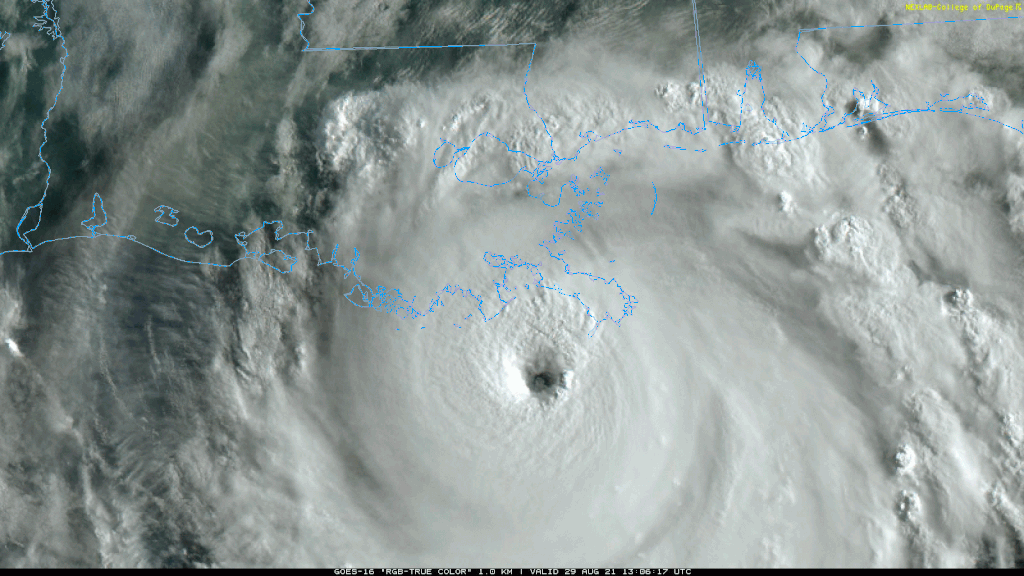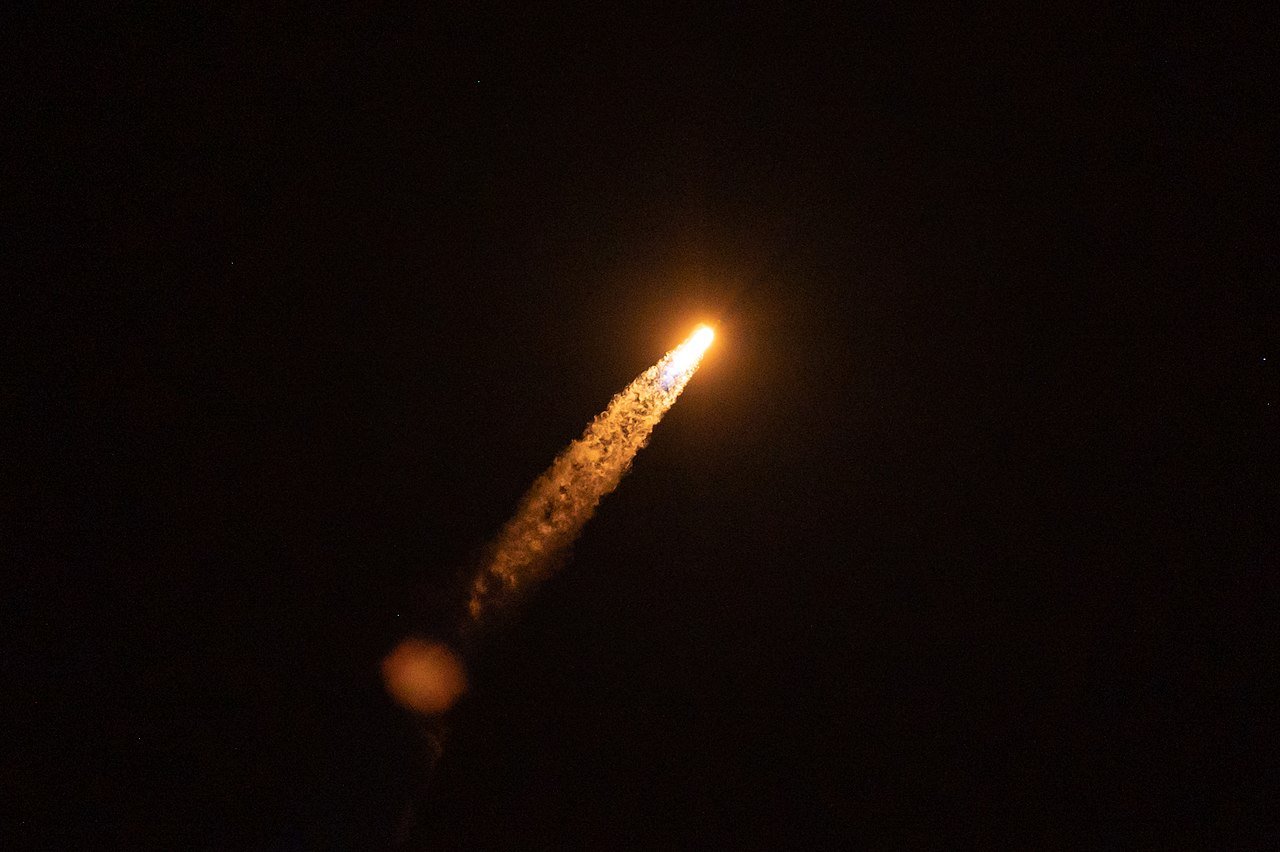
Cape Canaveral, home of the Kennedy Space Centre, is in Florida. The Sunshine State has long been the favourite destination for hundreds of thousands of tourists, many of them British, in search of warmth, fabulous beaches, and the many excitements of Disneyworld. More recently, along with neighbouring Alabama and Louisiana, it has also become ground zero for monster hurricanes, rapacious tidal surges, plus inland tornados -all of them the starkest evidence of global warming. This month’s Hurricane Ida sliced a 1500 mile wound across the face of America, and left a clear-up bill that could top US $95 billion.
On 15 September, 10:02 EDT (16 September, 00:02 GMT), four novice astronauts blasted off from launch pad 39a at NASA’s Cape Kennedy Space Centre. All of them were civilians, and they owed what followed to the largesse of a businessman and accomplished pilot called Jared Isaacman, whose company, Shift 4 Payments, has made him a billionaire. He reportedly paid Elon Musk’s SpaceX a total of $200 million for the four seats in the wholly automated three-day voyage into space and you can watch the entire adventure narrated on four episodes of a Netflix documentary
What made this flight special was that none of the Inspiration Four crew aboard the Dragon capsule had any hands-on input into their days in space. Six months pre-blast-off training had given them a thorough acquaintance with the challenges of orbital flight, plus the chance to feature in the Netflix movies, but in essence they were there as passengers, as customers, like you or me. They boldly went where many thousands of us – given a great deal of money – may boldly follow. Space flight, in other words, is about to become a branch of the travel biz.
You can see the start of the adventure on four-hour as-live coverage, available on YouTube, which takes the Inspiration4 crew from their arrival at Cape Kennedy to the tip of the SpaceX Falcon 9 rocket which then blasts them into space. They’re delivered to the Space Centre by fighter jet. They’re wearing those sexy black flight suits. Specially adapted Tesla cars are waiting to echo earlier journeys to the richly-historic launch pad 39A. This sleek marriage of product endorsement, NASA back-story, and complete faith in SpaceX engineering accompanies them as these, the world’s first civilian astronauts, emerge from Hanger X into the bright Florida sunshine. They acknowledge the applause of a sizeable crowd and exchange glances. What follows may be the sum of all our fantasies, but where does any of this astral hoopla take us?
Jared Isaacman understandably wants to emphasise the $200 million he hopes to raise for his chosen beneficiary, the St Jude’s Children’s Research Hospital in Memphis. This money will, he says, be used to accelerate medical research on pediatric diseases, a wholly welcome objective; but the fact remains that the gigantic sums involved could keep a class of slum kids in eats for the rest of their natural lives, or repair hurricane damage in battered Haiti. This is damage control of the first order, addressing problems that are increasingly man-made, but that fact appears to count for little compared to the nerve-shredding drama of countdown, the teeth-rattling excitements of launch, the wondrous rush of giving gravity the slip, and that ultimate selfie with Planet Earth hanging in blackest space beyond the Dragon capsule’s specially-constructed bubble window. Hubris is too small a word, as is courage, and sheer technical chutzpah. Madness, says me, might come closer.
Make no mistake. What happened on Launch Pad 39a last week in no way adds to the sum total of human endeavour. On the contrary, it puts a very rare and doubtless wonderful experience in the hands of the very few with the money to afford it. This is commerce, the opportunity for the very rich for get richer still, but it comes at a price paid by the rest of us earthlings, still the prisoners of gravity, economic or otherwise. Last week’s launch contributed between 200 and 300 tons of CO2 and other gases to the upper atmosphere, where it will linger for between two and three years. A long-haul flight typically generates between one and three tons of CO2 per passenger. Each of the occupants of SpaceX’s Dragon capsule will be exceeding that by a factor of twenty five. That will buy the planet a lot of global warming.

Fair? Hardly. Responsible? Well…. no. Three days in earth orbit will have given the Inspiration4 crew ample time to gaze down at the ominous evidence that our days on planet earth are numbered: yet more hurricanes boiling up in the Gulf of Mexico, huge fires devouring vast areas of the North American west coast, gigantic ice sheets melting in Greenland, whole chunks of Antarctica at the mercy of ever-rising sea and air temperatures, and – most alarming of all – hidden signs that the Gulf Stream we’ve always taken for granted, the conveyor belt that makes life in Northern Europe bearable, may be about to fail.
In 1768 Captain Cook circumnavigated the globe. His epic voyage took a great deal longer than the SpaceX Dragon capsule, but he left the fingerprints of Western civilisation and scientific endeavour on the fragile culture of the South Pacific islanders. They included gunpowder, rapacity and venereal disease, unintended consequences that have stayed with the islanders ever since.
Two hundred and fifty three years later, in a development that even the doughty Captain Cook would never have foreseen, space rides around that same Planet Earth will soon be routine: prized scalps hanging from the designer belts of the wealthy, tokens of extreme privilege and extreme macho can-do gutsiness. Riding into space in the hands of Elon Musk’s technology is, in some ways, evidence of the right stuff but in totally the wrong setting. Musk may have out-Disneyed Disneyworld, but his – and other bids to commercialise the heavens – remain a grotesque boil on the face of a planet and an ecology facing probable extinction.
Earthlings in New Orleans, Haiti, Bangladesh, Northern California, and countless other ravaged communities should sniff the wind, wait for dark, and then raise their eyes to the night sky. That final hurricane may arrive sooner than anyone thought.





